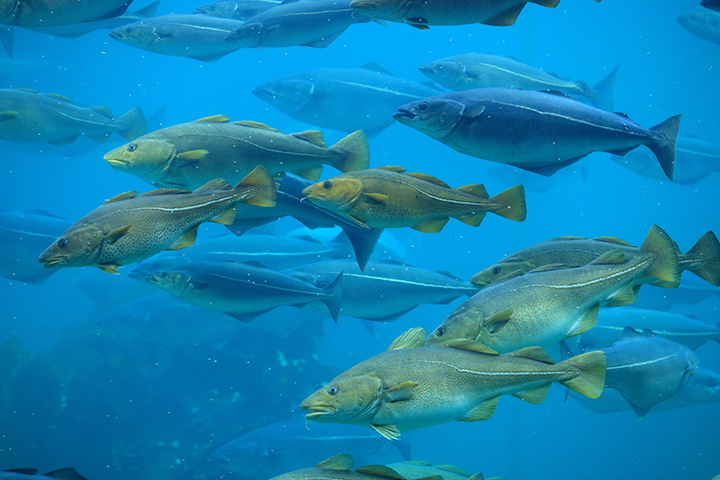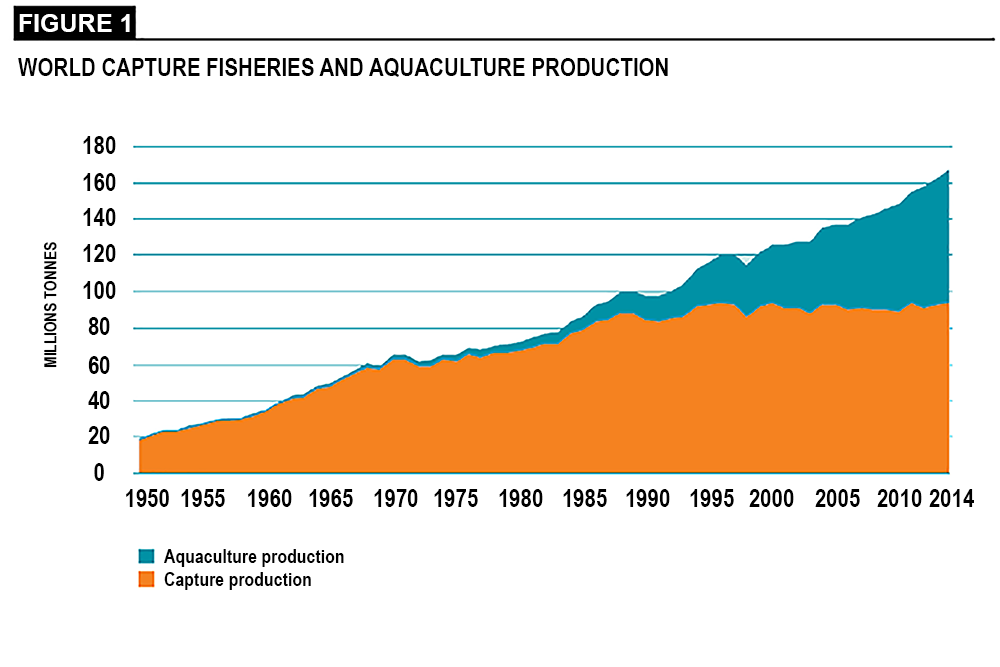Why Measuring Protein in Aquaculture and Fisheries Might Help Us Achieve More Sustainable Food Production

Human societies face the enormous challenge of having to provide food and livelihoods to a growing population, while addressing the disproportionate impacts of climate change and environmental degradation on the resource base. Fisheries and aquaculture play an essential role for food security and nutrition as identified by the United Nations’ 2030 Agenda for sustainable development.
Growing aquaculture
An increased supply of food from fisheries and aquaculture is required, while it is also important to reduce the current overfishing of our oceans. Thankfully, overfishing is starting to be addressed. The capture fishery production has been relatively static since the late 1980s while aquaculture has been responsible for the continuing impressive growth in the supply of fish for human consumption. Aquaculture is the today fastest growing food production industry and has recently matched the volumes of catch from fisheries.

© FAO. 2018. The State of World Fisheries and Aquaculture 2018 – Meeting the sustainable development goals. Rome. Page 3.
However, substantial volumes of fishmeal is required to feed the fish in aquaculture. A better utilization of current resources and more sustainable alternatives are desired.
Two examples
One example to solve this is by using fish silage from captured fish, which is a rich source of protein. Obtained by preserving whole fish by-products with an acid and letting enzymes from the fish hydrolyse the proteins, silage has potential to increase growth and reduce mortality of animals that receive it in their feed. In the past, fish by-products were often thrown away as waste whereas today it can be used more efficiently instead. Producers are constantly measuring the fish silage – trying to optimize the nutrition value and ensure that the product is not spoiled.
Another example is using yeast instead of fishmeal as protein source. A study[1] by David Huyben at Department of Animal Nutrition and Management, SLU, Sweden shows how a large part of the fishmeal intake can be replaced by yeast. Replacing fishmeal with yeast will give a more sustainable protein source that do not compete against the food for people. Another promising fishmeal product is yeast grown on food waste, since it is high in protein and cannot be used directly as a human food. Measuring and controlling the protein level in yeast products are essential.
Analysing protein
Understanding and a capability to measure the protein in all different nutrition sources is therefore becoming more and more important for fisheries and aquaculture facilities. Especially in areas where exports of fish and fish products are essential such as Norway, Faroe Islands, Iceland, Peru, and Scotland. OPSIS LiquidLINE instruments and technology is today helping producers in these countries to achieve better efficiency in their fisheries and their aquaculture facilities. As an example, the Aquaculture Research Center at the University of Stirling Scotland is using OPSIS LiquidLINE KjelROC to analyse protein in fishmeal. Several fisheries in Iceland are using an OPSIS LiquidLINE KjelROC analyzer to analyse captured fish and their fish silage.
To read more about the current state of fisheries and aquaculture, please see the Food and Agriculture Organization of the United Nations and their report The State of World Fisheries and Aquaculture 2018.
Contact us to learn more about our solutions for fisheries. Please do ask about our application support and research we do in our laboratory in Sweden.
[1] Huyben, David (2017). Effects of feeding yeasts on blood physiology and gut microbiota of rainbow trout. 2017:69, ISBN 978-91-7760-028-2, https://pub.epsilon.slu.se/14478